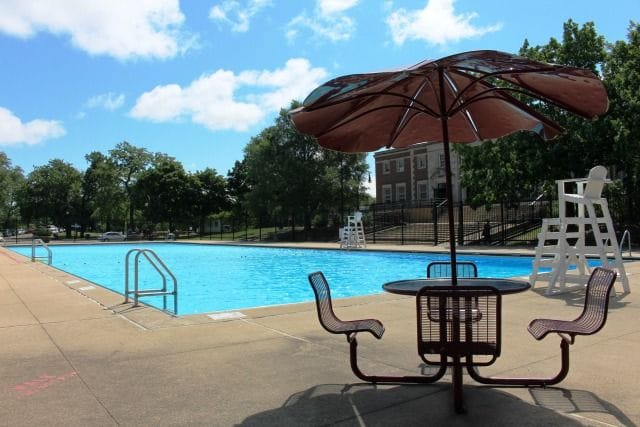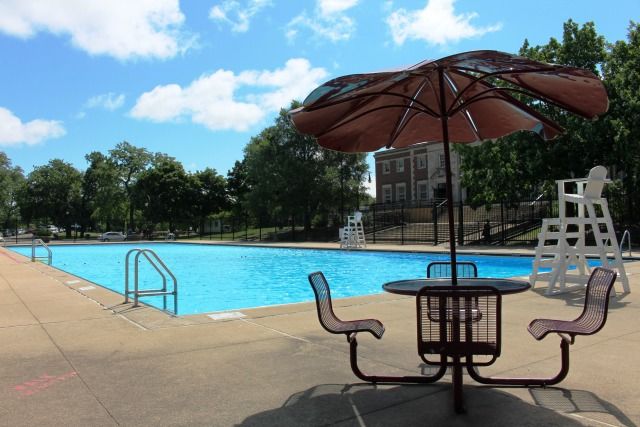US pools close, go without lifeguards amid labor shortage
Chicago, which boasts one of the nation's largest aquatic programs — 77 public pools and 22 beaches that serve a population of nearly 2.75 million — pushed opening day for pools back to July 5 from June 24.


By ARLEIGH RODGERS and CLAIRE SAVAGE | Associated Press/Report for America
INDIANAPOLIS (AP) — Manager Ashley Ford strode the perimeter of one of Indianapolis' five open swimming pools, monitoring kids as they jumped off a diving board or careened into the water from a curved slide. Four lifeguards, whistles at the ready, watched from their tall chairs stationed around the water.
With a dozen of the city's pools shuttered due to a lifeguard shortage, families sometimes line up more than an hour before the one at Frederick Douglass Park opens, Ford said. Many days, it reaches capacity.
A national lifeguard shortage exacerbated by the COVID-19 pandemic has prompted communities such as Indianapolis to cut back on pools and hours. In other spots around the United States, swimming areas go without attendants.
That’s left some Americans with fewer or riskier options, even as a significant part of the nation endures a second heat wave in as many weeks. Public health experts say the risk of drowning decreases significantly when lifeguards are present.
“That’s my biggest thing, is making everybody safe,” Ford said.
The American Lifeguard Association estimates the shortage impacts one-third of U.S. pools. Bernard J. Fisher II, director of health and safety at the association, expects that to grow to half of all pools by August, when many teenage lifeguards return to school.
“It is a disaster,” Fisher said.
Summer shortages aren’t unusual, but U.S. pools are also dealing with the fallout from earlier in the pandemic, when they closed and lifeguard certification stopped, Fisher said. Starting pay lags behind many other jobs, though some cities are ramping up incentives.
Indy Parks and Recreation has 100 lifeguards on staff this year when normally it would have double that, said Ford, who was worked for the agency for 20 years. Even as lifeguards from closed neighboring pools bulk up the open facilities, pools in Indianapolis must still close for an hourlong lunch and cleaning break each day.
When a local pool is not open, young people may go swimming in places without lifeguards, Fisher said. That can result in more drownings, which disproportionately affect people of color. In the U.S., Black people under 29 are 1.5 times more likely to drown compared with white Americans of the same age, according to the Centers for Disease Control and Prevention.
About 330,000 people enroll the American Red Cross’ lifeguarding course annually. That figure shrank, as many pools shuttered due to the pandemic, but is now rising, Jenelle Eli, senior director of media relations for the American Red Cross said in a statement to The Associated Press.
Indy Parks requires its lifeguards to pass a course in which they swim 100 yards, tread water for a minute without using their hands and retrieve a 10-pound object from the bottom of a pool. Starting pay is $15 per hour, up from $13 an hour earlier this year. Those who stay through the season will receive a $100 retention bonus, Boyd said.
“I’ve tried to get some of my friends that want to get a summer job and want to have money in their pockets,” said second-year lifeguard Donald Harris, 17. “They’ve just said lifeguarding isn’t for them.”
At Indiana's state parks, lifeguards are paid $11 an hour. All of the state’s 37 facilities remain open, but some operate on limited hours, said Terry Coleman, director of the Division of Indiana State Parks. Many Indiana state parks additionally have shallow swimming areas without lifeguards, Coleman said.
“We’re looking at potential incentives for maybe the 2023 recreation season, but nothing in stone yet,” he said.
In Maine, several state parks started the season without lifeguards, and visitors are informed at the park entrance when no lifeguard is on duty, said Jim Britt, spokesperson for the Maine Department of Agriculture, Conservation and Forestry. The state pays lifeguards about $16 an hour.
“It’s a concern,” Britt said. “There’s no two ways about it. We want lifeguards to be there and to be on duty.”
Chicago, which boasts one of the nation's largest aquatic programs — 77 public pools and 22 beaches that serve a population of nearly 2.75 million — pushed opening day for pools back to July 5 from June 24.
“Chicago families rely on our park programs during the summer, so we are not giving up,” Chicago Park District Superintendent Rosa Escareño said in a news release.
Escareño attributed the scarcity in part to “mass resignation” — referring to post-pandemic labor shortages.
Chicago Park District pays $15.88 hourly and is now offering bonuses of $600, up from $500 in May, to new hires who stay through the summer. It also relaxed residency requirements, meaning applicants do not have to live in the city.
One cause for applicant hesitation unrelated to the pandemic may be a lifeguard sexual abuse scandal that rocked Chicago Park District last year.
Escareño said the organization has since strengthened its accountability and reporting systems.
“I think right now, the most important thing is to ensure that we open safely, and that we place the greatest priority on safety, not just the safety of our residents, but also the safety of our employees,” she said.
Associated Press reporter David Sharp in Portland, Maine, contributed to this report. Savage reported from Chicago. She and Rodgers are corps members for the Associated Press/Report for America Statehouse News Initiative. Report for America is a nonprofit national service program that places journalists in local newsrooms to report on undercovered issues.

The Chicago Journal needs your support.
At just $20/year, your subscription not only helps us grow, it helps maintain our commitment to independent publishing.






